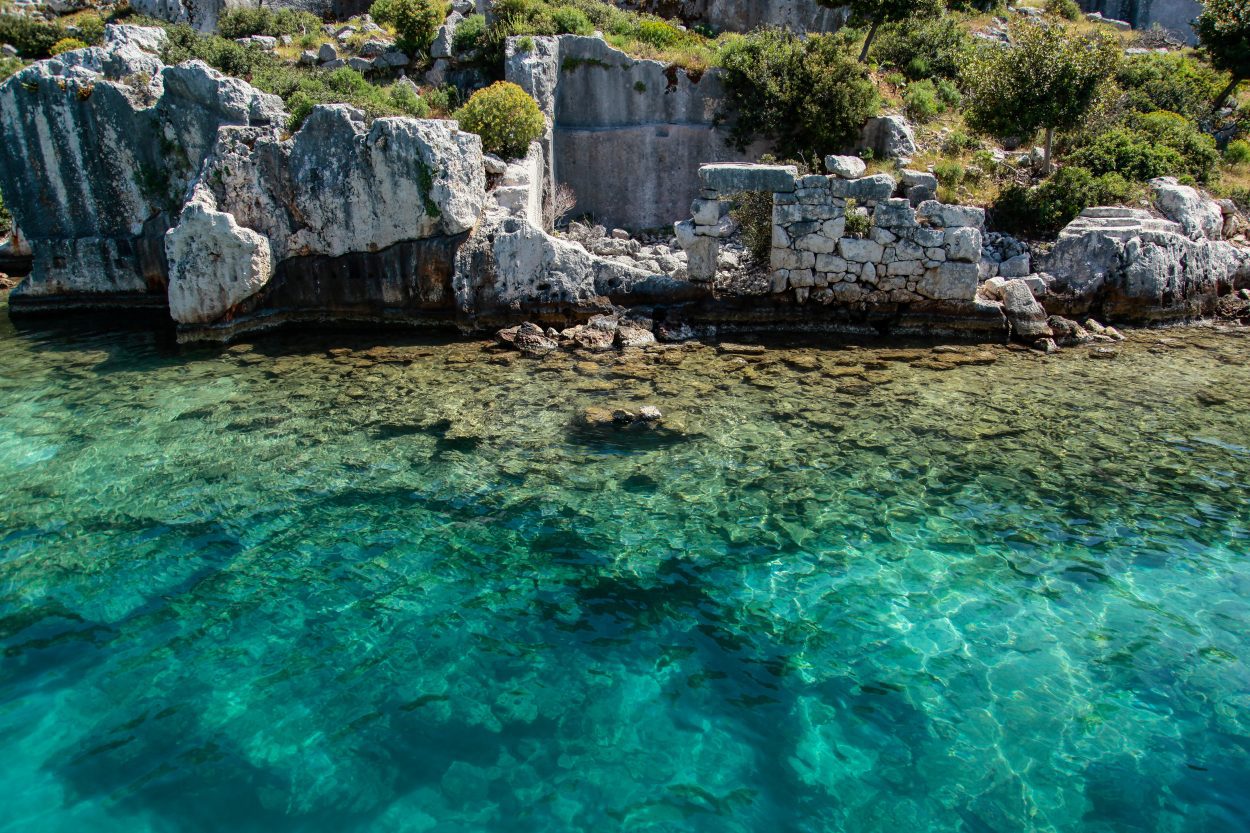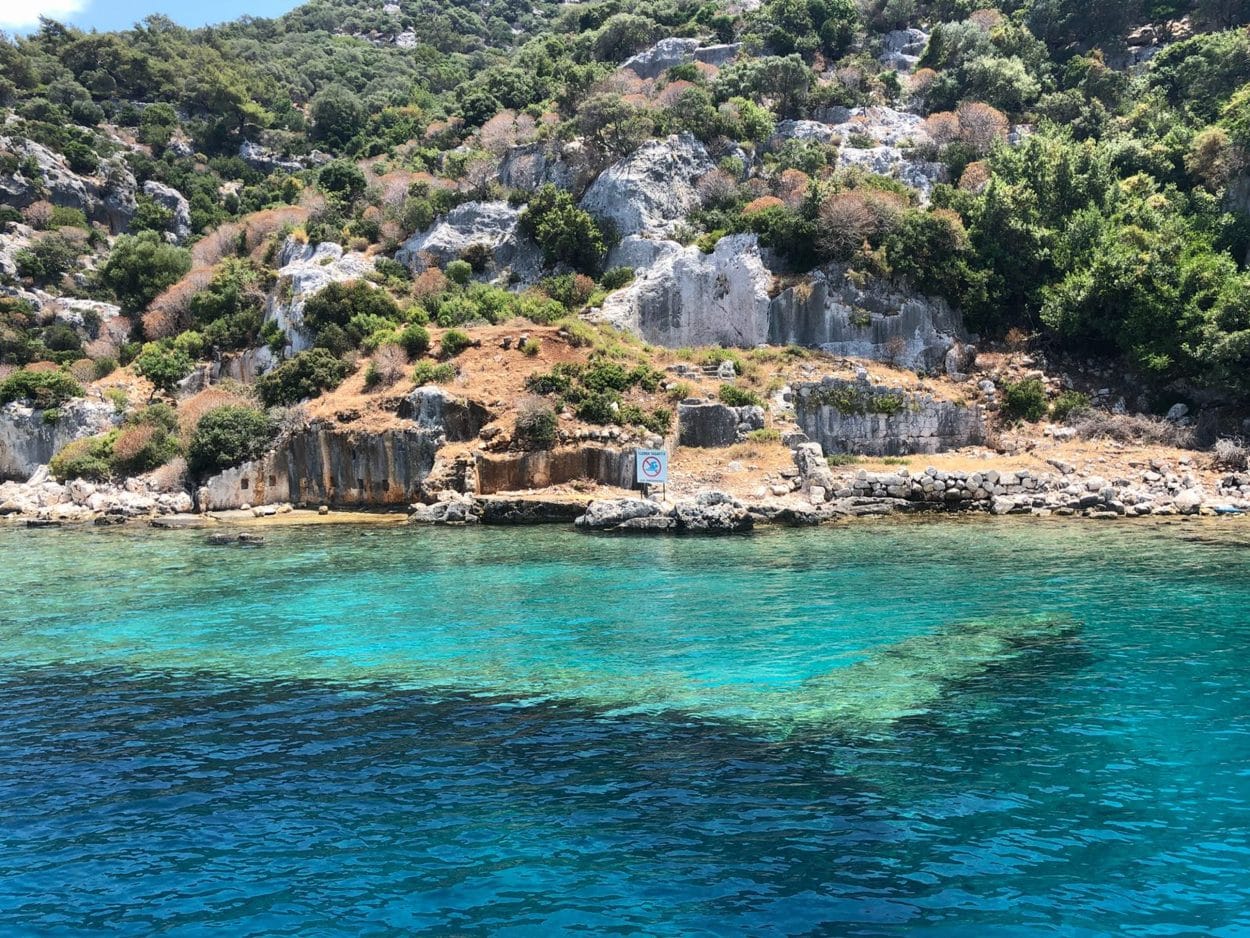Dolichiste, also called Kekova Adası is an ancient Lycian city, partially submerged on the shores of Kekova Island in southern Anatolia, Turkey.
The city was a trading hub on an ancient Mediterranean trade route between Andriake (the port of Myra), Simena, Teimioussa, and Aperlae, where a maritime culture developed thanks to the sheltered and protected waterway between Kekova Island and the mainland.
Architectural remains and various shipwrecks have been dated from the Archaic to the Byzantine period, suggesting that Dolichiste was occupied for several centuries until it was partially submerged due to tectonic activity and rising sea levels during the late Holocene.

The settlement was situated between the Hellenic arc-Pliny Strabo trench-Fethiye Burdur fault zone, the Cyprus arc, and the African-Arabian subduction zone, resulting in significant earthquakes, tsunamis, and vertical displacement.
Within the effected region are other Lycian cities, such as Aperlae, Theimiussa or Tristomon, Simena, and Andriake (the ancient harbour of Myra), all of which are also partially submerged with buildings dating from the late Roman to the early Byzantine period.

The surviving remains above the waterline at Dolichiste consists of moles, quays, rock-cut and stone-built buildings, water channels, staircases, pipes, and sarcophagi, whilst beneath the waves are numerous foundations, rock-cut staircases, rock-cut water channels, terracotta pipes, and a series of 5th to 7th century AD amphorae piles.
Dolichiste has been mentioned in several accounts by travellers who are known to have visited the island over the centuries, including Philip Augustus III in AD 1191, and Mario Sanuto in AD 1300, but from both travellers accounts the city was already ruinous.

Studies actually suggest that the city was gradually abandoned by the 7th–8th century AD, indicated by the lack of medieval remains post the Byzantine period. Natural disasters such as earthquakes, tectonic movement, and plague in the 6th century AD, and conflicts between the Arabs and Byzantines in the 7th century AD left the region unprotected, that culminated in the city likely being abandoned.
Header Image Credit : Nejdet Duzen – Shutterstock





